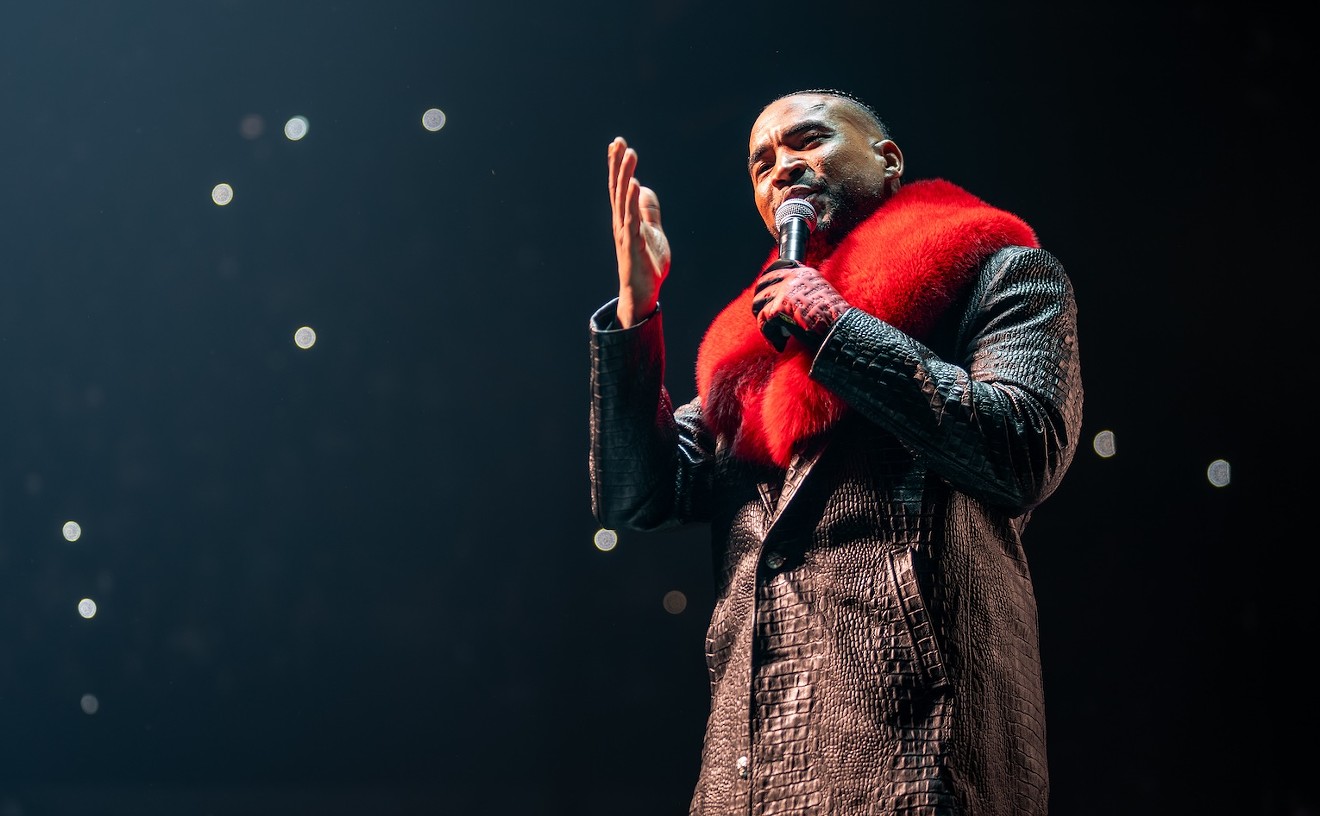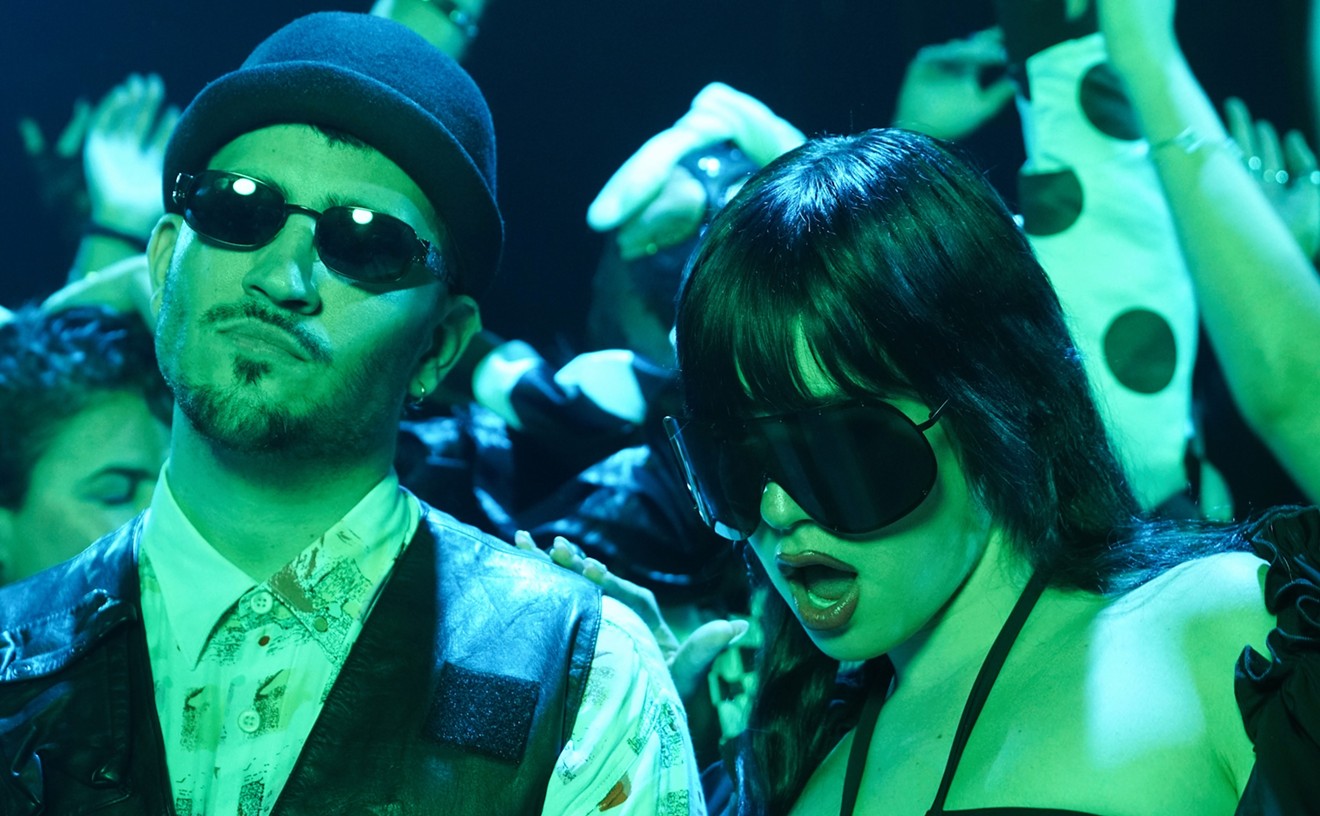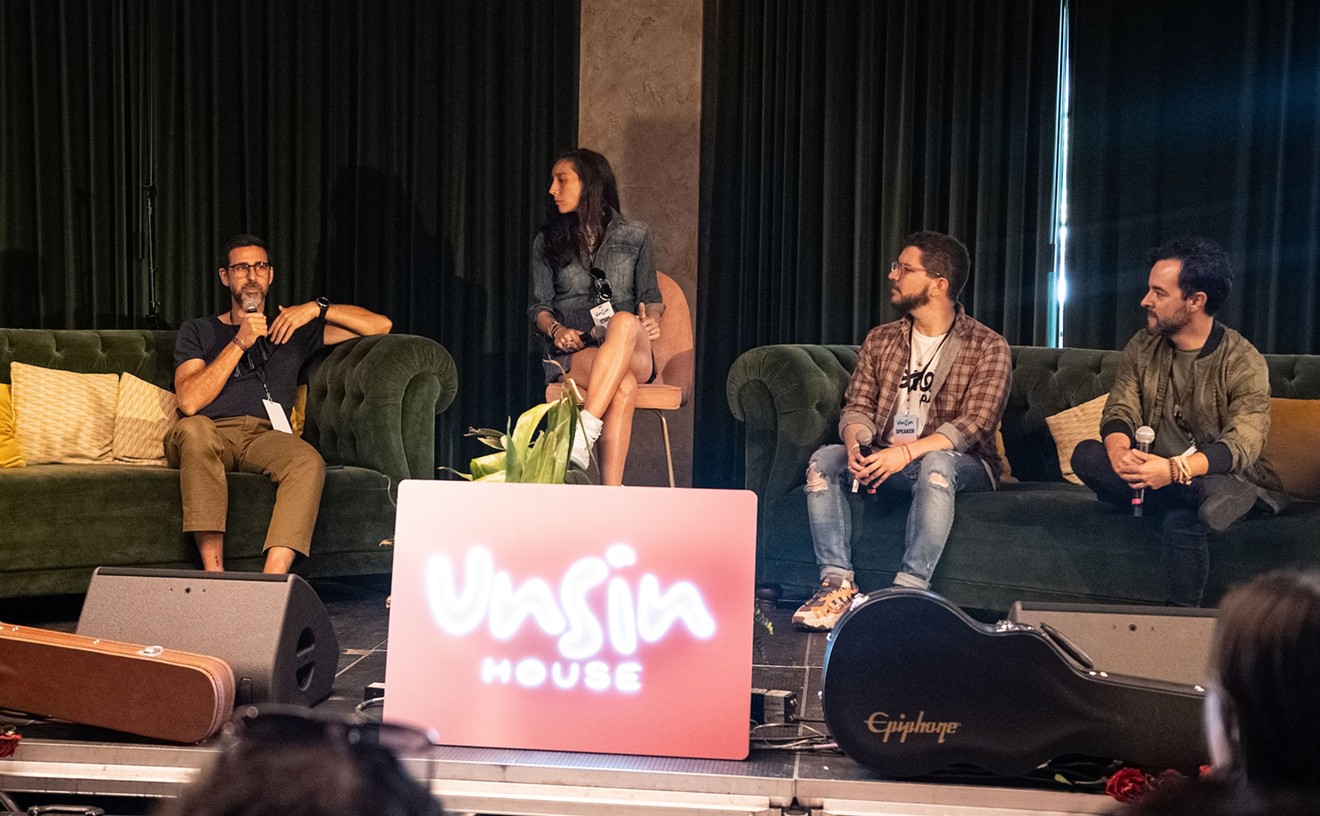For many this extramusical allure remains the sole explanation for the Dead's enduring appeal, an appeal that seemed to defy all the conventions of the music marketplace. With little presence on the charts, and an image that often seemed wildly out of sync with the prevailing cultural mood, the Grateful Dead continued to pack stadiums and sell out tours, right up to Garcia's passing in August 1995. A cult the Dead may have been, but it remained a cult of surprising vitality.
But even in death Garcia is lauded more as a countercultural heavyweight than a musician. The actual notes he played are dismissed as the soundtrack for vapid Sixties nostalgia, a footnote to the sociological phenomenon that is the Deadhead experience. Three new discs -- two from the Dead's voluminous live archive, and a third release featuring the band's survivors -- help define that legendary draw, presenting the music in exactly the form that cast its spell over audiences.
Mother McCree's Uptown Jug Champions unearths a rollicking 1964 live set that captures the Dead in embryonic form, as an acoustic jug band. Dick's Picks Volume 13 is the latest installment in the ongoing issuance of the Dead's concerts on CD, courtesy of their tape archivist Dick Latvala. This time he presents a complete New York performance from May 6, 1981. Proving that the long strange trip of the Dead is far from over is The Strange Remain from the Other Ones, an assemblage led by the remaining Dead members (including bassist Phil Lesh, guitarist and vocalist Bob Weir, and drummer Mickey Hart) that toured nationwide this past summer. The Strange Remain cherry-picks two discs' worth of live highlights from that tour.
Along with these CDs, a new book, Sweet Chaos -- The Grateful Dead's American Adventure, offers a fresh approach to deciphering both the band's music and its magnetic allure. As a committed antiwar activist in Berkeley during the Sixties, author Carol Brightman traveled in circles related to the Dead (her sister became their lighting designer), but her political convictions kept her from getting on the bus. Accordingly her critique of the Dead comes from the Left: In her eyes the Dead's hoary cultural baggage wasn't that they were revolutionary ambassadors for the New Age, but that they weren't revolutionary enough. At a point when Brightman was decrying Amerika, breaking bread with the Weather Underground, and organizing the Venceremos sugar-cane brigades to travel to Havana to labor in solidarity with the "New Man" of Castro's Cuba, the Dead was taking the opposite tack.
Brightman cites an interview with the Dead's main lyricist and spiritual guide, Robert Hunter, who provided the words for the bulk of Garcia's songs. Speaking of the band's 1970 breakthrough album American Beauty, Hunter says, "There was a photograph that was due to go on the back cover which showed the band with pistols. They were getting into guns at the time, going over to Mickey's ranch, target-shooting. It wasn't anything revolutionary." Rather it was simply part of their neo-cowboy ethic. "I saw that photo," he recalls, "and that was one of the few times I ever really asserted myself with the band and said, 'No -- no picture of a band with guns on the back cover.' These were incendiary and revolutionary times, and I did not want the band to be making that statement. I wanted us to counter the rising violence of that time. I knew that we had a tool to do it, and just didn't dare go the other way. Us and the [Jefferson] Airplane -- we could have been the final match that lit the fuse, and I went real consciously the other way."
In her own interview with Hunter, Brightman returns to this point. Precisely at a period when so many in the New Left were seeking a way to politicize the hippy hordes of the Woodstock Nation, the Dead seemed to be herding the flock away from the barricades. "The [political] movement, being Marxist-based, had a script, and anything that would further that script was allowable, including unethical and immoral actions," Hunter explains. "There was a lie in it that just turned me off, and that was the true source of the collapse of the movement. The Grateful Dead was the opposite of that ... the masses that were following us and saying 'Yes, this is speaking to me!' It wasn't Karl Marx speaking to them; it was something deeper, something American."
You can hear exactly what that "something American" was, even as early as the 1964 summer evening captured on Mother McCree's Uptown Jug Champions. "It's great to get together," a 22-year-old Garcia exclaims earnestly in a postshow interview that bookends the Mother McCree set. "We don't expect to make a fortune at it or ever be popular or famous or worshipped or hit the Ed Sullivan Show or anything like that. As long as we can play, we'll play, regardless of what it's for or who it's for, or anything. It's fun for us, that's the important thing."
That spirit of giddy playfulness seeps through the music here, a tub-thumping collection of folk standards the band barrels their way through on banjo, kazoo, tin cup, washboard, and windmill-strummed acoustic guitar. In contrast to many of the old-timey outfits of the period, Garcia's group displays little piety with these chestnuts. Songs such as Jimmie Rodgers's "In the Jail House Now," Huddie Ledbetter's "Big Fat Woman," and Jesse Fuller's "Beat It on Down the Line" aren't holy texts to be recited, but age-old tales of wisdom and licentiousness, fully inhabited by their new interpreters. The musicianship isn't virtuoso, yet there's a ragged but right quality throughout that gets the music over.
What's on display even at this early stage is an intimate acquaintance with roots, not as affectation, but as deeply felt experience. In late 1965 Mother McCree's Uptown Jug Champions would plug itself into amplifiers and reconstitute itself as the electrified Warlocks, and later the Grateful Dead. After a few years of loose acid blues and lyrical whimsy, the band would hunker down to craft something both timeless and altogether new, drawing on that same body of work that inspired them originally, but updating it for a new era.
Brightman writes: "Garcia and Hunter wove together strands of bluegrass, English, and American folk motifs, California country and western, gospel, blues, the Beatles, Dylan, and the Band into a Whitmanesque sampler.... Like no other popular music before or since, it spoke to the dailiness of getting by, which is largely overlooked in the lyrics of other bands, and it satisfied a longing for songs that come from somewhere, that have a past, if only a sense of the past."
It shouldn't be surprising then that the 1970 albums American Beauty and Workingman's Dead, which first introduced many of the Dead's songs to the public, remain the band's biggest sellers. Songs like "Uncle John's Band" and "Brokedown Palace" aren't just catchy, however. What lingers uniquely on these records is a sense of hope rising through the pained fragility of Garcia's voice. Written in response to the November 1969 Altamont concert killing (which many in the media indirectly attributed to the Dead's misguided recruiting of Hell's Angels to act as security at the event), "New Speedway Boogie" summons up this sentiment mightily. As the band settles into a slinky yet barbed groove, Garcia seems to be addressing much more than one death, more than Altamont's denouement as the end of Woodstock's Edenic promise, more than the Manson Family's transformation of the hippy lifestyle into something malevolent and sinister, more even than Vietnam's interminable fighting. Yet the Dead resisted the despair, instead intoning solemnly: "Things went down we don't understand, but I think in time we will. One way or another, this darkness got to give." As Brightman posits, it's at precisely this moment that the Dead start looking like the sagest philosophers in town.
"Demonstrations had turned to trashings, which offered the police and the National Guard a pretext for using tear gas and guns," Brightman writes. "Were protesters supposed to arm themselves? ... Or should they demobilize and return to teach-ins, petitions, and marching up and down in front of the White House holding candles? For the vast majority of political organizers, not to mention hundreds of thousands of foot soldiers, these questions were answered in the negative. In time it was a negative that spread like a slow-growing mold over the once-vibrant culture of political activism. Anger and frustration turned into cynicism, and cynicism, feeding on itself, led to withdrawal. It was against this background that the nation-state of fans to which the Grateful Dead lays claim began to bulk up and acquire some of its characteristic mating calls."
It was a call that followers were still answering almost two decades later when a time-scarred Garcia smiled, shook the dust from his hair, and croaked on 1987's "Touch of Grey": "I know the rent is in arrears, the dog has not been fed in years, it's even worse than it appears, but it's all right." The song was a subtle nod to 1969 and the Band's "The Weight," with its wandering narrator's plea to a friend to care for his dog while he's gone. It's an impassioned wish that sums up the Dead's ethos: keepers of the Sixties flame celebrating their very survival as an anthem. Its supporters, chiming in on the chorus from arenas across America, may have had their political inaction mistaken for apathy, but it was not out of resignation that they disengaged from the body politic. It was out of disgust.
The New Left had crashed and burned and its surrounding milieu lay stripped of meaning. If neither Weather Underground-style armed resistance nor flower child nonviolence seemed to make sense any longer, what else was there to do but keep on truckin'? "We're still here," was what the Dead was announcing, speaking not just for its members, or even a generation, but rather, for an idea -- one that apparently still had its true believers, even in the depths of the Reagan era.
For a sense of the miles traveled, listen to the version of "Going Down the Road Feeling Bad" on Dick's Picks Volume 13. Although this Woody Guthrie song was among Mother McCree's 1964 repertoire, a world of difference marks the distance from there to the 1981 New York concert version. Originally sung as a short, straightforward ode of Depression-era Okies seeking the promised land of California, the Dead retains the song's soulful and redemptive tone, but also uses it as a springboard for jazzy improvising. As the rhythm section launches into a solid gallop, keyboardist Brent Mydland lays down a thick wash of organ, providing a solid bed for Garcia's nimble guitar lines to arc and lazily pinwheel above like a gliding seagull. The band pulls back, opening up the song to a sense of eerie deep space before the drummers seize the reigns, engaging in a bout of percussion that seems part duet, part battle.
By the time Garcia reaches "Down the Road"'s driving coda with its wistful urge for "going where the climate suits my clothes," he seems more in search of a lost utopia than any change in the weather. It's precisely the kind of inventive jamming that would disappear from the Dead by the following year, when Garcia's heroin addiction (stemming from the late Seventies) became all-consuming.
His guitar playing soon descended into the perfunctory, with aimless noodling replacing what was once pointed exploration. Bassist Phil Lesh has referred to this period as the "Heineken years," an admittance of his own alcoholism as a response to Garcia's disinterest in life beyond drugs and the rest of the band's acquiescence in simply soldiering on. In 1985 Garcia was arrested for drug possession, an event that seemed to scare him straight (or at least straighter), and flashes of inspiration would return in the following years. But by 1992 Garcia had lapsed again into the full throes of his addiction, to the point where even the most die-hard fan would have to agree that any magic occurring was out in the audience, not under the stage lights.
Which is why the Other Ones' performance from the summer of 1998 on The Strange Remain comes as such a surprise. After all, the core of this band (Hart, Lesh, and Weir) is the same unit that seemed to plod on during the last few years of the Dead's existence. Now augmented by keyboardist Bruce Hornsby (a frequent collaborator from the early '90s), saxophonist Dave Ellis, guitarists Steve Kimock and Mark Karan, and percussionist John Molo, they cohere as a pulsing jazz unit. The band floats effortlessly from structure into a swirling rush of bell-like tones, twinkling piano, and crystal-sharp guitar notes, gracefully plucking melodies out of the air. One could quibble over the song selection here (no "Dark Star"? -- the Dead's signature vehicle for inner travel; where's Lesh's chilling take on the Garcia ballad "China Doll"?) but what did make the cut is strong enough to silence any fears that the Other Ones would become an oldies act.
There's a vibe of mystery and chance on The Strange Remain, a return to the Dead's hallmark tradition of leaping into the void in search of transcendence. We're not always sure where the band is heading, and neither, it seems, do the musicians themselves know. It's a quest that doesn't always pan out, but when it does, when the group finally bears down on a theme, all their instruments singing in unison as on the rolling crescendoes of "St. Stephen," it's a truly wondrous thing.
If there is indeed a tinge of nostalgia at work here (both for the members of the Other Ones and their faithful audiences) it's not necessarily a wholly negative pathos. The legacy of the Sixties still lingers powerfully as an unfulfilled promise. Whether its adherents mused or raged, carried signs or built bombs, they held firmly to the idea of the future as malleable. In today's social landscape, where the boundaries of the possible seem fixed in stone, it may be more important than ever to dream, and the more ridiculous the fantasy, the better.
It's a sentiment Carol Brightman echoes when she recalls the "plaintive one-finger salute of Deadheads outside concerts. They were looking for the miracle of a free ticket but also, I came to think, for the lost spirit of the Sixties. This includes the loopy abandon of the [Merry] Pranksters; the hedonism of the Grateful Dead, with their fondness for risk, at least where drugs and music are concerned, also their genius for teamwork; and the audacity and fierce belief in justice of the New Left at its prime. 'I need a miracle' is what you say after your elders have thrown in the towel.










